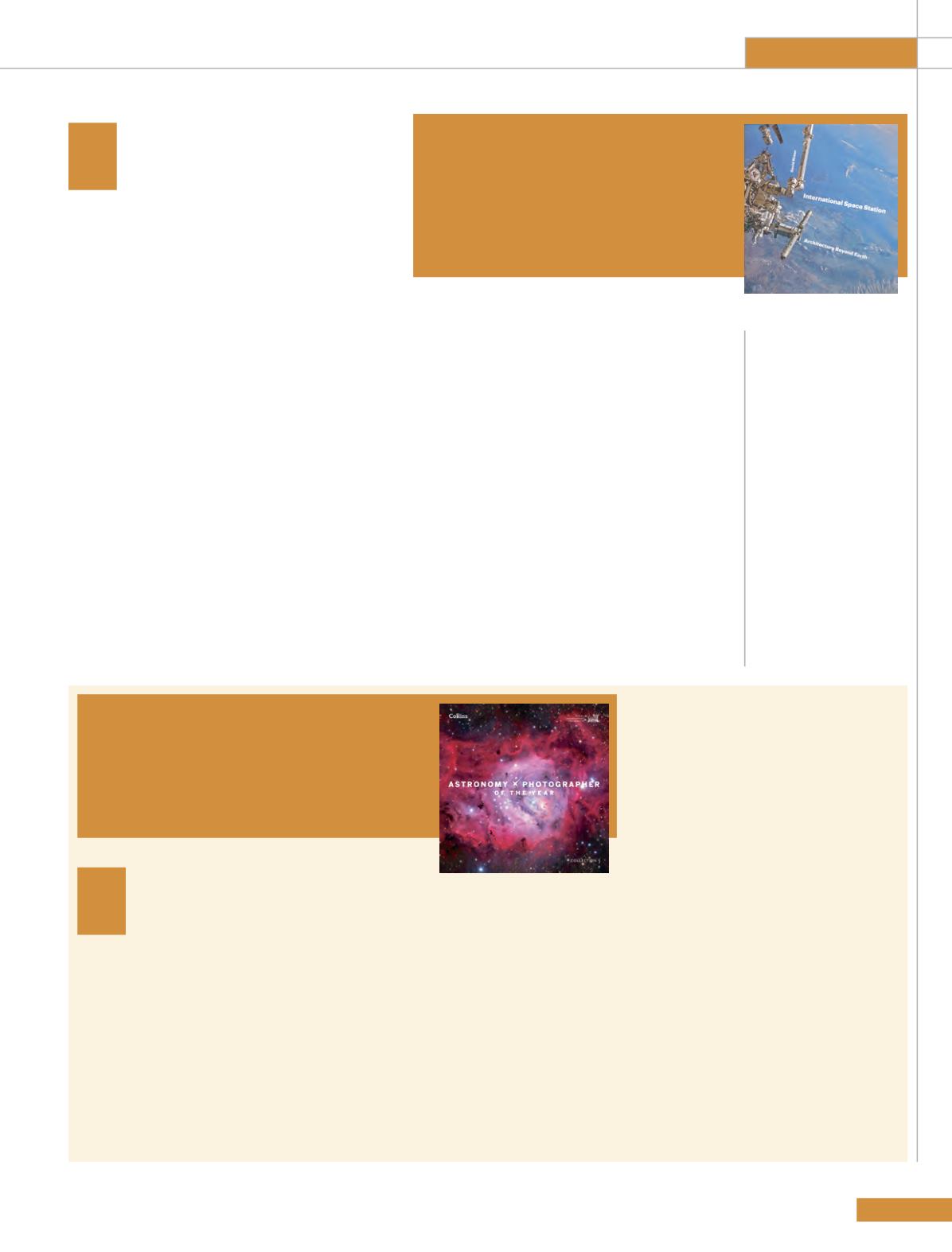
ROOM
111
Book Reviews
T
he main triumph of the International Space
Station (ISS) project is not so much the
experiments conducted on board (though
of course many of them are important in
the context of human space exploration) but the
fact that it is a football field-sized structure built in
Earth orbit. This aspect is fully recognised by the
author of this book, an architect with “a particular
interest in designing for space exploration” and one
of “a handful of architects invited to work on the
design” of the ISS.
His intention, in this significant tome, is to
celebrate the ISS, demystify the technical aspects
(in part by eschewing acronyms and jargon) and
“hold the attention of readers…without them
dozing off”. Always a good plan! He does this in four
main sections covering specific successive periods
between 1979 and 2011 and includes a decent index,
a reference section and a short glossary. The book
also includes a memoir from NASA astronaut (and
ROOM contributor) Nicole Stott, who writes about
her impressions of living on the ISS.
As one might expect from a book that
concentrates on the architecture of the Station,
there are numerous module diagrams of both
early concepts and actual ISS assembly, and it is
instructive to have both together for comparison.
The historical analysis of the many precursor
designs is particularly interesting. The book is
illustrated with colour photography throughout
and shot selection is good, though reproduction is
spoiled somewhat by the matt paper; this is not a
glossy coffee-table book.
However, the book is large enough to cover the
main points of the Space Station’s design history
while still having room for issues of detail, such as
windows, which have been an issue in spacecraft
design since the famous argument about the
Mercury capsule. The author mentions the equally
famous Skylab window, which architectural
consultant Raymond Loewy championed “as its
recreational value alone…would justify its cost”. ISS
astronauts would no doubt agree, and windows
- even a cupola - are now seen as de rigeur. It’s
unlikely that this is the only book on the ISS that
space aficionados will want but it should certainly be
on their list.
A
strophotography is both an art
and a science and this is nowhere
better illustrated than in this
collection of astronomical images
resulting from the 2016 Astronomy
Photographer of the Year competition.
The glossy, well-produced volume
contains all 140 of the winning and
short-listed images in 11 categories
including ‘skyscapes’, ‘our Moon’, ‘stars and
nebulae’, ‘people and space’ and ‘best
newcomer’. Each section showcases the
winner, runner-up and highly commended
entries followed by the images that
reached the respective shortlist.
The book succeeds on several levels.
For anyone interested in astronomy,
it’s an obvious hit because it illustrates
their subject in an immediate and easily
accessible way. And for those into
photography, although it represents a
fairly narrow and specialised field, it
offers a significant technical challenge
for those in search of a ‘different image’.
It also works as both an artistic and
educational resource. One could open
it as one would a coffee table book, with
expectations of a quick flick-through,
but I challenge anyone not to stop and go
‘wow’ occasionally; or say “what on Earth
is that?”. Of course, the point is that many
of the images are not ‘on Earth’ at all,
effectively representing the limits of the
human imagination as much as scientific
research. And that is one of the beauties
of astronomy: that it crosses the putative
cultural divide between art and science.
What was the overall winner of the
2016 competition? A series of images
from the start to the end of a solar
eclipse stacked together to form an
artistic composition with the dark
circle of the Moon in the centre and
concentric arcs on either side. The arcs
show the phenomenon known as Baily’s
Beads which occurs when light from the
sun flickers out as the eclipse begins and
appears at the opposite edge of the disk
as the eclipse ends. You may not always
agree with the judges’ decisions - but
that just adds to the fun!
Astronomy Photographer
of the Year (Collection 5)
Collins, 2016, 191pp, hardback
£25.00,
ISBN 978-0-00-819626-4
International Space Station –
Architecture Beyond Earth
David Nixon
Circa Press, 2016, 416pp, hardback
£65.00
ISBN 978-0-9930721-3-0


